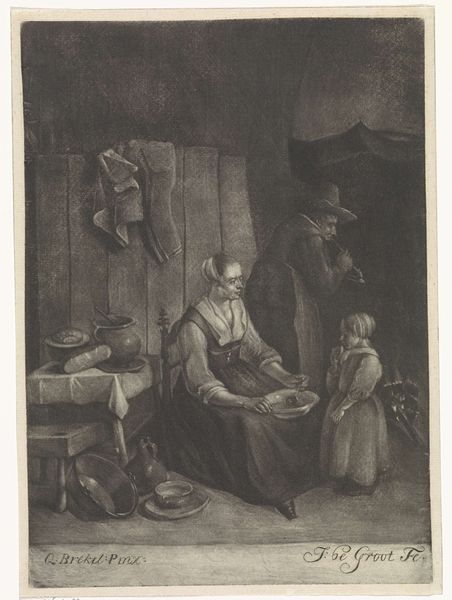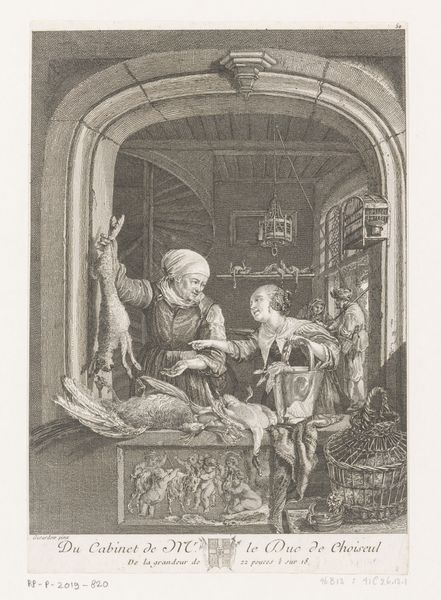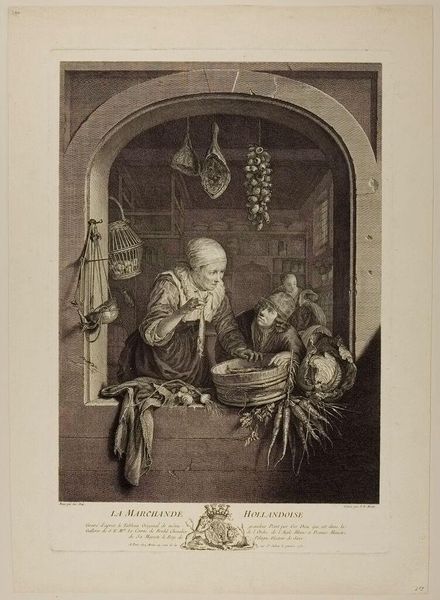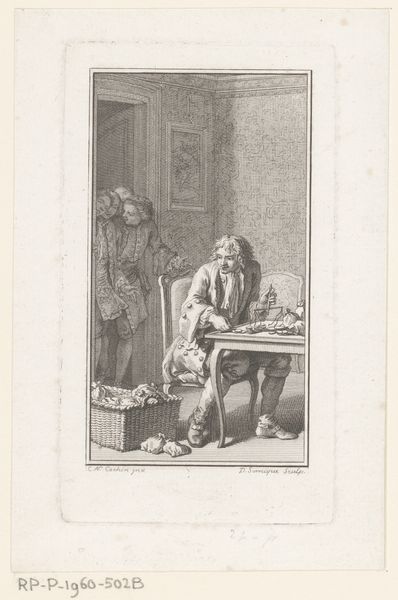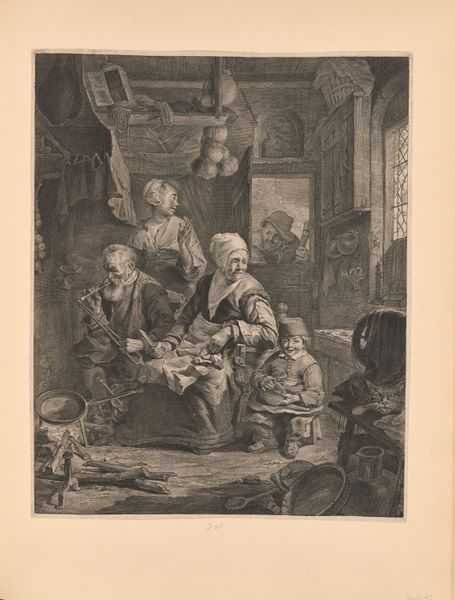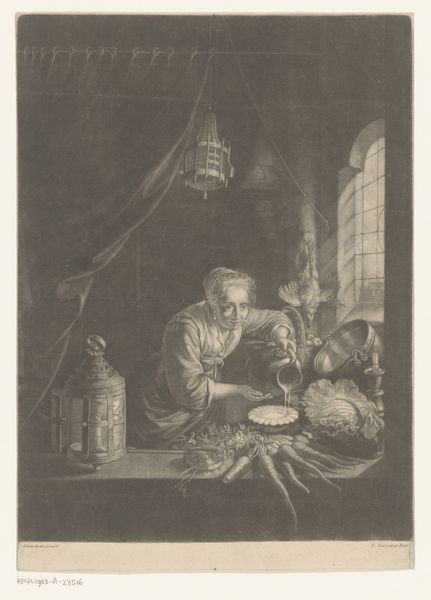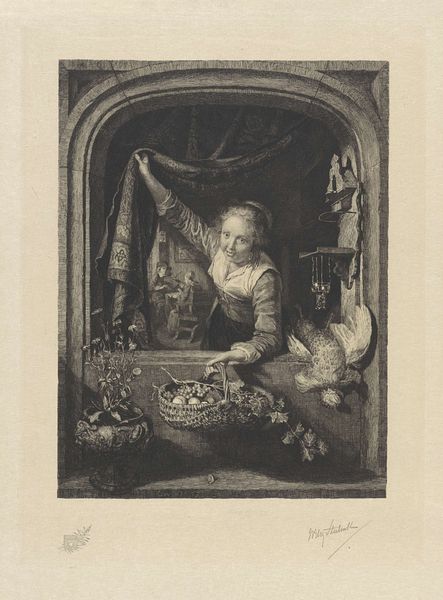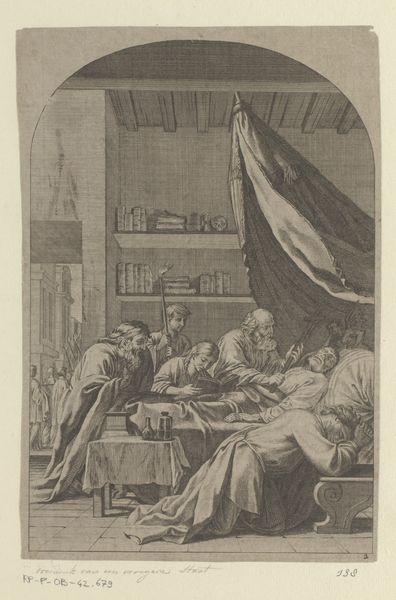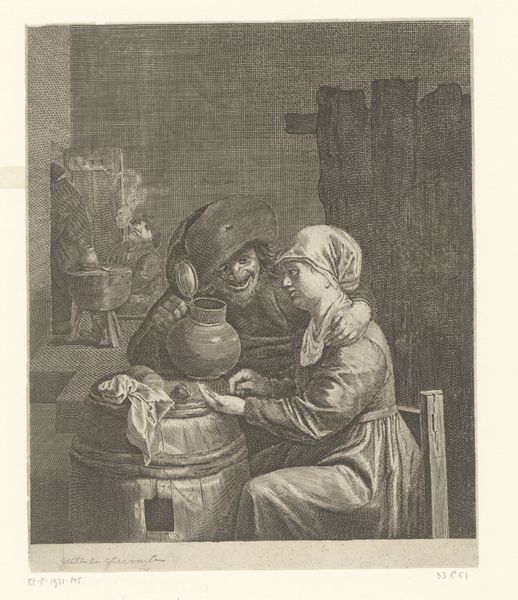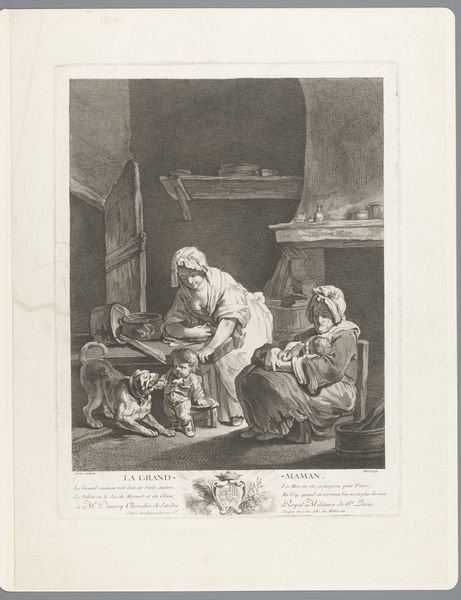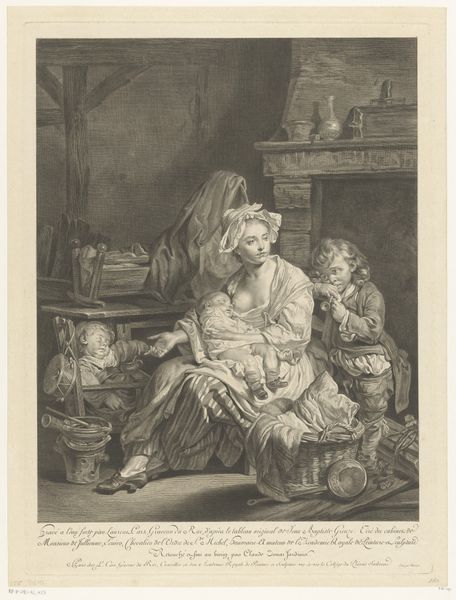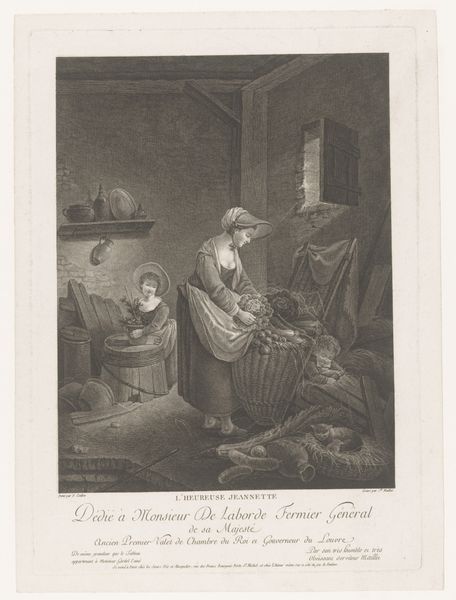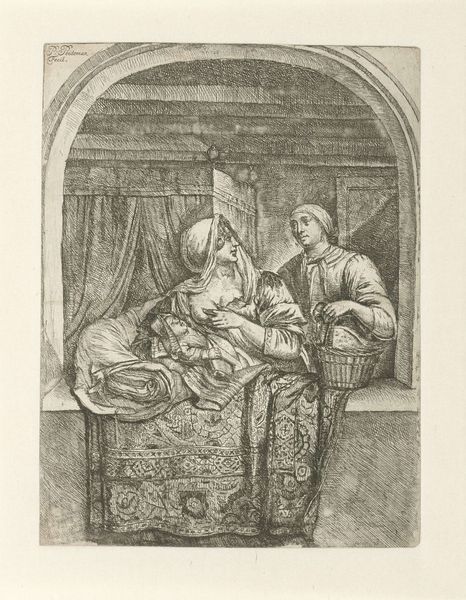
print, engraving
#
baroque
#
dutch-golden-age
# print
#
old engraving style
#
19th century
#
genre-painting
#
engraving
Dimensions: height 513 mm, width 350 mm
Copyright: Rijks Museum: Open Domain
Editor: This is "Haring verkoopster in een venster," or "Herring seller in a window," a print by Pierre Etienne Moitte from around 1754. It gives a fascinating snapshot into what seems like everyday life. I'm curious, how do you interpret this work within its historical context? Curator: This piece, created during a time when prints were becoming increasingly accessible, gives us a window – pun intended – into the lives of working-class women. Look closely: who holds power in this interaction? We might see the woman as simply selling herring, but consider her agency. Is she merely a vendor, or is she actively participating in the local economy, asserting her presence in a patriarchal society? What are your thoughts? Editor: That’s interesting, I hadn't really considered her agency within the larger context. It’s easy to see the work at face value. I suppose I just saw two figures buying and selling, an everyday transaction. Curator: Exactly! And it’s important to recognize those seemingly ‘everyday’ transactions are rarely neutral. Gender, class, even access to light as shown here… These all play a role. Think about what her window *allows* her to do; conduct business in a controlled, potentially safer space. Does it challenge, or simply reinforce, the existing power structures of the time? Editor: It sounds like we're examining more than just a simple sales transaction. It sounds like looking through this historical lens helps unpack social structures of 18th century Holland! Curator: Precisely. Art, even in what appear to be simple genre scenes, offers opportunities to ask essential questions about gender roles, class dynamics, and economic power. Next time, try asking, whose story *isn't* being told here. What would that perspective add?
Comments
No comments
Be the first to comment and join the conversation on the ultimate creative platform.
